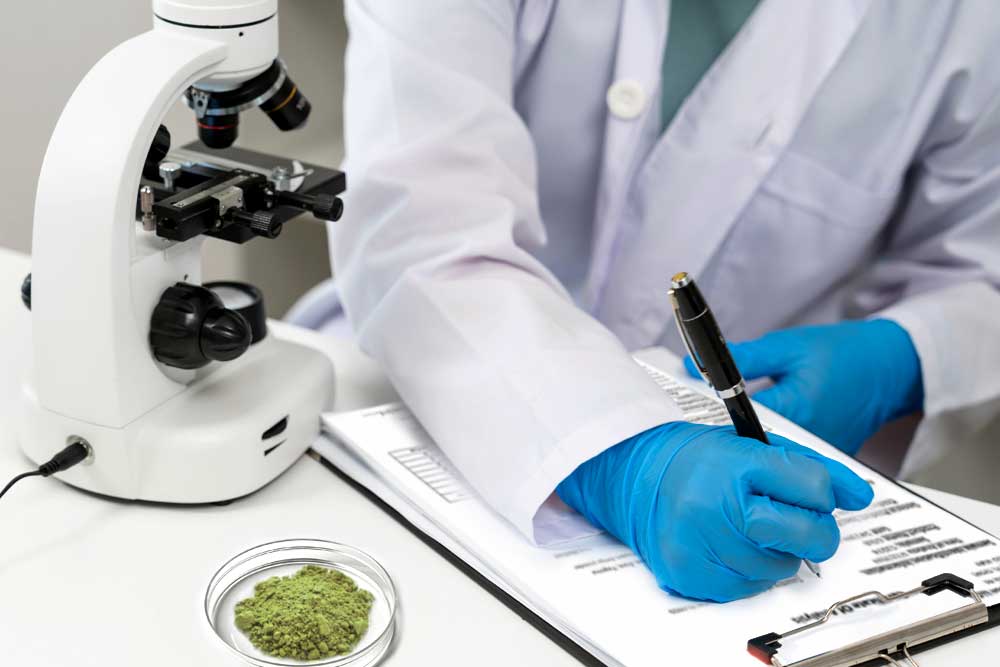How to Read a Kava COA (Certificate of Analysis): Know Your Kavalactones and Ensure Quality

How to Read a Kava COA (Certificate of Analysis): Know Your Kavalactones and Ensure Quality
With the growing popularity of kava as a natural alternative for relaxation and stress relief, understanding what’s inside your kava is critical. That’s where a Certificate of Analysis (COA) comes into play. A COA is more than a document—it’s your lens into the safety, potency, and profile of the kava you consume. For those looking to make conscious, informed decisions, learning to read and interpret a COA is a must.
The Role of Science and Quality Control at Kava Depot
Kava Depot prioritizes transparency and rigorous quality standards. Our in-house laboratory, led by seasoned chemist Kristl Youngs, uses cutting-edge technology—like the Agilent 1100/1200 HPLC system—to analyze each batch of kava. With over 20 years of lab experience, Kristl ensures that each Certificate of Analysis reflects accurate, scientific data about the product’s chemical makeup, safety, and classification as noble kava.
What You Can Learn from a Certificate of Analysis
Each COA contains several essential pieces of information, including batch number, origin, moisture content, microbial safety, and most critically, the breakdown of the six major kavalactones. These active compounds—often referred to as “The Big Six”—shape the psychoactive effects of kava. Also listed is the chemotype: a numeric sequence representing the order of the most dominant kavalactones in that sample.
The Big Six Kavalactones and Their Effects
The six major kavalactones found in kava are:
- Desmethoxyyangonin (DMY): Often associated with mild euphoria and stimulation. Typically found in uplifting kavas.
- Dihydrokavain (DHK): Known for its calming and muscle-relaxing effects. Prominent in many balanced noble kavas.
- Yangonin: Believed to interact with cannabinoid receptors. Can contribute to mood elevation and mental clarity.
- Kavain: Central to the classic kava “heady” experience—euphoric, mentally uplifting, and socially energizing.
- Dihydromethysticin (DHM): Strongly relaxing and sedative. Prominent in nighttime or sleep-promoting kava blends.
- Methysticin: Has both analgesic and calming effects, often contributing to deep body relaxation and a clear-headed calm.
The total percentage of these six kavalactones usually ranges from 6% to 15% in noble kava root powder. A higher percentage often means a stronger kava, but more isn’t always better. The balance among these kavalactones determines the character of your experience—whether you’re seeking focus, relaxation, or deep sedation.
How to Use Chemotype Information to Predict Effects
A chemotype is a sequence of six numbers indicating the order of the most dominant kavalactones. For example, a chemotype of 426 means kavain is most dominant (4), followed by dihydromethysticin (2), then desmethoxyyangonin (6). Here’s how to interpret them:
- 2 or 4 first: These indicate noble kava, generally uplifting or balanced. Great for daytime or social settings.
- 5 or 6 first: Often more sedative. Suitable for evening use or managing stress and insomnia.
By cross-referencing your preferred experiences with the chemotypes of past products, you can begin to personalize your kava consumption. This allows you to make smarter choices when exploring new varieties.
Practical Example: Interpreting the Vanuatu Taboo COA
Let’s look at the COA for the Vanuatu Taboo batch S1898. It shows a chemotype of K/DHM (‘Noble’ type) with a total kavalactone content of 8.66%. The kavalactone profile is dominated by kavain (52.26%) and dihydromethysticin (7.25%), indicating mood‑enhancing and relaxing properties. This batch would be a good choice for unwinding after a long day or preparing for restful sleep.

How COAs Help You Avoid Subpar or Unsafe Products
One of the main benefits of understanding COAs is the ability to spot red flags. Be cautious if a COA lacks a chemotype, omits microbial test results, or does not verify noble status. These omissions could mean poor transparency or risky product quality. Additionally, avoid products with chemotypes starting with 5 or 6 if you’re seeking daily-use noble kava, as these may not meet noble classification standards.
Making Informed Purchases Through COA Literacy
Armed with knowledge of kavalactones and chemotypes, you can now assess each batch’s suitability for your desired effect. Whether you’re new to kava or a seasoned drinker, reading the COA enables smarter, safer, and more personalized decisions. Kava Depot makes this easy by offering up-to-date COAs, clearly labeled by batch number and origin. It’s not just about potency—it’s about trust and transparency in every sip.
Frequently Asked Questions About Kava COAs
- What does the chemotype tell me about the kava?
A chemotype reveals the dominant kavalactones in order. This sequence helps predict the effects—whether stimulating, relaxing, or sedating. - Is a higher kavalactone percentage always better?
Not necessarily. While higher percentages indicate stronger potency, balance among the kavalactones is key to a pleasant and effective experience. - How do I know if a COA is trustworthy?
Look for documentation from certified labs, batch-specific results, and the presence of microbial and heavy metal testing. Reputable vendors publish COAs consistently. - Can I use the same COA for multiple bags?
Only if the batch number matches. Each COA is unique to its batch and may not apply to other lots, even of the same product type. - What should I do if a product doesn’t provide a COA?
Consider this a red flag. Transparency is vital in herbal products. It’s best to choose vendors who provide full COAs for each batch they sell.

